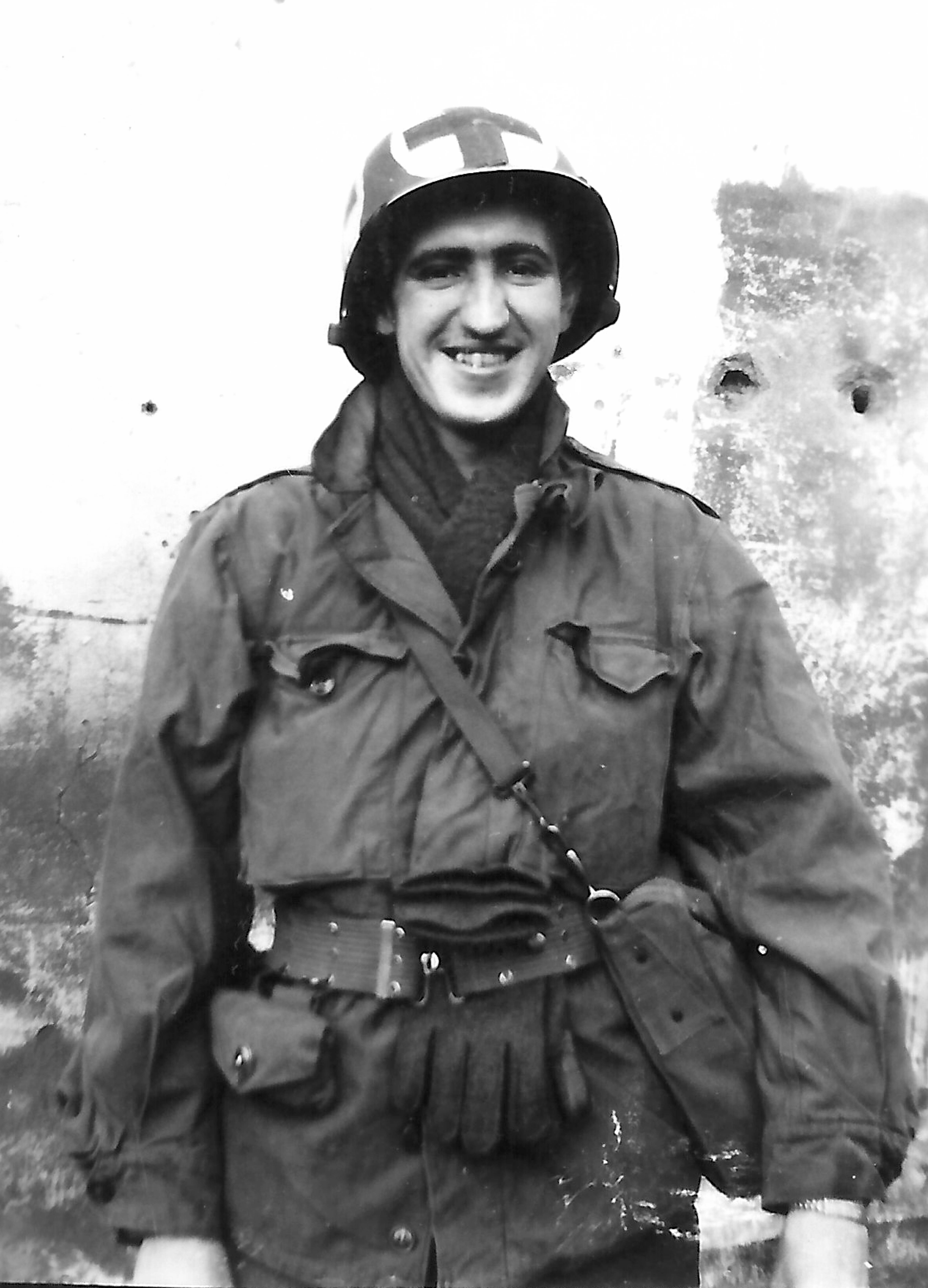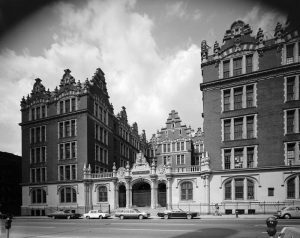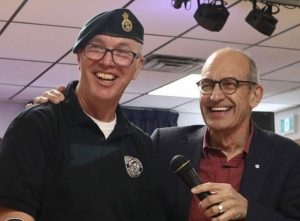
Late in 1945, after the Second World War, my father Alex Barris received his honourable discharge from the U.S. Army. He had survived training as a medic in Kansas in 1943, the bloodbath that had been the Battle of the Bulge in western Germany in the winter of 1945, postwar occupation service in Czechoslovakia and transatlantic passage back home to New York City in time to rejoin his family for Christmas.
Eager to return to civilian life, Dad visited his alma mater, Haaren High School, to claim his education transcripts. As the school registrar retrieved the papers, Dad strolled through the school hallways, pausing at the school’s honour roll.

“Alumni Who Gave Their Lives in World War II,” the banner announced atop the wall. There were dozens and dozens of names – 56 in all. Then, the most incredible thing happened. He saw his own name etched there in the bronze. Dead. Honoured. But it was a mistake. When he tried to explain the error to the registrar, however, she blushed and blurted out:
“Oh my! Someone will be in trouble over this.” And she dashed away.
My father saw no point in lingering to force the issue. “The correction was never made,” Dad wrote later, “The old Haaren building was torn down sometime in the 1980s, so I guess my premature demise was eventually … demolished along with the building.”
Besides, the Servicemen’s Readjustment Act, or GI Bill, entitled him to a pension, further education and even housing if needed.

Memories of my father’s postwar experience returned to me last Sunday when I met Ken MacKay at the Royal Canadian Legion in Port Dover. Branch 158 was throwing a party that day to raise awareness and funds for a walkathon that the 65-year-old Canadian veteran has planned for this spring and summer.
“I’m trying to get homeless veterans off the street,” MacKay told me. “There are about 10,000 vets who don’t have a roof over their heads. But veterans are proud, so they won’t report that they’re homeless. There could be more.”
A rambunctious teenager back in 1978, Ken MacKay (or maybe his parents) decided he needed some discipline in his life. So he joined the regular forces, serving first with Princess Patricia’s Canadian Light Infantry, then as a reservist with the 48th Highlanders.
He said he listened to veterans talk about their deployment to Bosnia, Rwanda, Somalia and Afghanistan. “They fought over there,” he told the Hamilton Spectator newspaper, “and now they’re fighting another battle to get counselling and housing. I thought, ‘That’s not right. They shouldn’t have to do this twice.’”
Reports from Employment and Social Development Canada offer a glimpse of the problem. According to a pre-COVID survey, veterans account for nearly 5 per cent of homelessness in Canada.
Homeless vets are mostly in their late 40s and most often are men. But a national shelter study showed that building and opening permanent housing brings those numbers down.

MacKay found out about the Homes for Heroes Foundation, a Canadian registered charity that builds so-called “tiny-home communities,” collections of small houses – typically under 500 square feet in size and clustered together on the same property.
A tiny-home website suggests the residences are designed for people who want to live intentionally smaller, simpler lifestyles with stronger social bonds – vets living near vets. Several tiny-home neighbourhoods have been built in Calgary, Edmonton and Kingston. MacKay decided to do his part.
When I arrived at the launch party in Port Dover on Sunday, there were already thousands of dollars in cheques and cash piled up in MacKay’s donation box. On April 26, he’ll begin walking from Windsor – about 25 kilometres a day – eastbound to Ottawa, about 800 kilometres in all.

“I’m a grunt. I’m an infantryman,” he told me. “But this is nothing compared to what those vets had to do fighting in Afghanistan for a year. Nobody’s shooting at me.”
Besides helping build those tiny homes, I wondered what motivated MacKay to take up this cause so passionately. He pointed to photographs and plaques on the walls of the Legion.
“My grandfather’s name is on that wall,” he said, “and my mother’s picture is over there. My family’s been with this Legion since it began.”
There was great reverence and respect as MacKay pointed at those commemorations of his relatives. And I suggested, “I guess you know they’re watching.”
“Yes, that’s it,” he said with his eyes welling up. “Right, Mom?”
Ken MacKay’s walkathon to support Homes for Heroes comes through Uxbridge about May 17. You can donate at www.h4hf.ca.